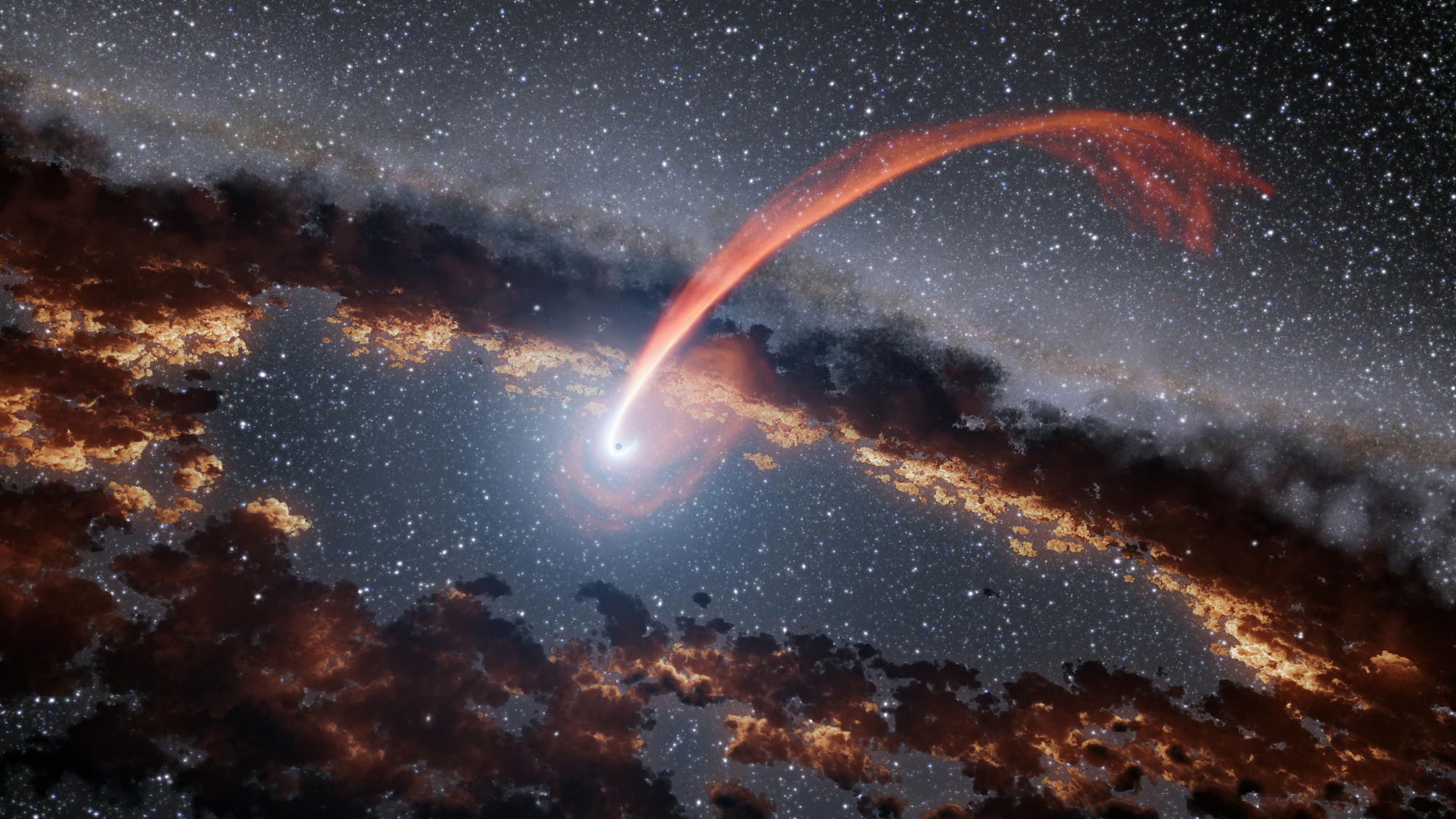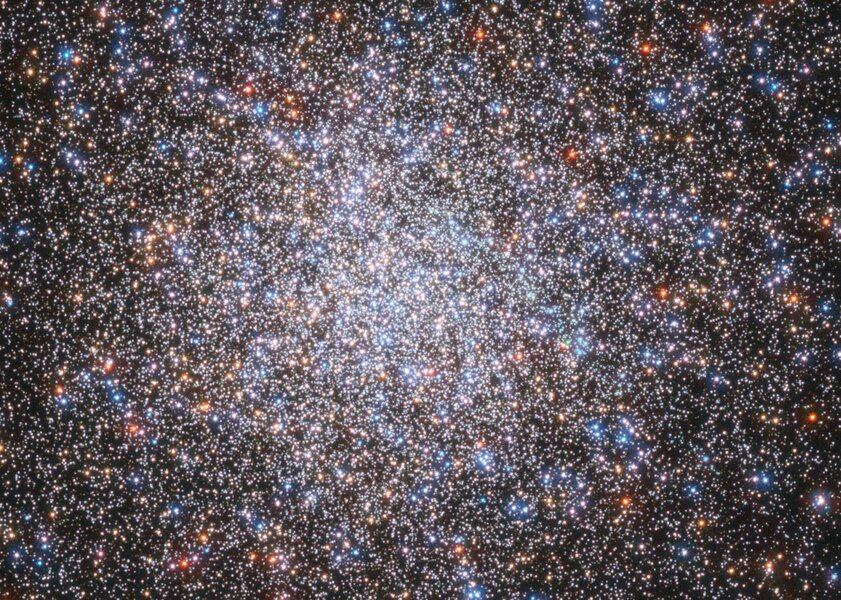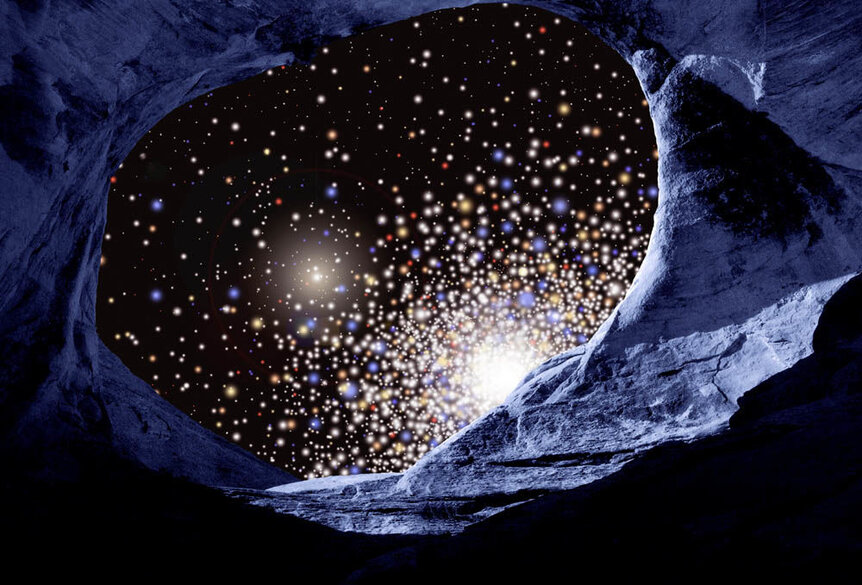Create a free profile to get unlimited access to exclusive videos, sweepstakes, and more!
Star clusters can disrupt planetary systems, tossing planets into black holes

As I write this, over 4,100 exoplanets — planets orbiting other stars — have been discovered, with more found nearly every day. The first was announced in 1992 and things progressed slowly at first, but we now have dedicated space missions looking for them, and that total number has and will continue increase a lot.
Nearly all these planets have been found orbiting "field" stars, ones that are on their own (or in a binary system) in the galaxy. Out of all of the exoplanets we know of, only about 30 are orbiting stars in clusters — groups of thousands of stars or more held together by their own gravity. And only one has been found in a globular cluster (the planet PSR B1620-26 b in the globular cluster M4), despite these clusters having hundreds of thousands of stars, and some dedicated searches in globulars to look for planets.
One reason for this may be that stars in globular clusters tend to be very old, and formed when there were fewer heavier elements in the Universe. Without lots of things like carbon and iron it's harder to make planets in the first place. However, open clusters (ones that have fewer stars, tens of thousands at most) can be any age, and we don't see planets there either. Also, some globulars show evidence of younger stars, so perhaps some of the stars should be capable of forming planets.
Yet we don't see them. Part of that may be because stars are so closely packed that the methods we use to find planets are hobbled a bit. Still, you'd expect more. Something else must be going on.
What's going is… other stars. In such a closely packed environment, stars get much closer to each other than they do out here in the suburbs of the Milky Way. The nearest star to the Sun is a little over four light years away. In a cluster, especially the very dense core of a globular, there can easily be thousands of stars in that same volume!
Such close encounters mean other stars can pass close enough to gravitationally influence each other. If a young star is forming a planetary system, another star might pass by and truncate the disk of gas and dust where the planets are being baked. That makes it harder to form planets in the first place.
Also, once planets form, a nearby pass from a star can destabilize the planet's orbit, dropping it into its host star (where it, um, won't last long) or ejecting it into the space between stars. But does this actually happen in clusters?
A team of scientists just published a paper saying: Yes. In fact, it's common.
They made a computer model of a globular cluster with 800,000 stars, using what we know about the distribution of star masses (that is, when you make stars, most of them are low mass and only a few are high mass), and populating some fraction of them with planets — in this case, they allowed a planet to orbit those stars at a distance of either 1 Astronomical Unit (or AU; the distance from the Earth to the Sun, which is 150 million kilometers) or 5 AU. They then let the stars move around, allowing their gravity to control actions just like in the real Universe, keeping track of what happens. They ran models over and over again, varying some quantities to see what differences those make. Once the models are run, the results can be compiled and investigated in a statistical way.
The goal is to see what happens to the planets in the cluster as stars pass close to each other, especially in the crowded core. What they found was rather astonishing.
For planets orbiting 1 AU from the star, 10% of them were stripped from their host star by close encounters. For planets 5 AU from their stars, half (!!) were stripped away — which makes sense; a planet farther from its host star isn't held as tightly by gravity, so a near pass can strip one away more easily.
What happens to the planets then? Well, 30–80% were tossed out of the cluster completely! The encounter gave them enough velocity to leave forever, so away they went. In the real Universe, planets like this would be traveling through intergalactic space, so that's a bit bleak.
This can help explain why no planets are seen around stars in clusters. It at least generates a decent deficit, and there may be other factors that limits them further. Hopefully future studies will dig down into that.
But we're not quite done yet. Once a planet is loosed from its star, things can get really cool. Because they created a distribution of stars in mass, some of the stars are very massive, go supernova, and become black holes. In a cluster of nearly a million stars, quite a few black holes will be created. Due to a process called dynamical friction, these tend to fall to the center of the cluster. When a planet passes through the center, it can get captured by the black hole and orbit it.
Let me repeat that: A planet can pass near a black hole and fall into orbit around it.
Cooooool. This is actually a difficult process to occur successfully; in general a planet passing near a black hole (or a star for that matter) will simply fall toward it on a parabolic path, accelerate, then pass it, going back out into deep space. You need some way to slow the planet down to orbital speeds, which in general means you need a third massive object like a star in just the right place at the right time to steal a little bit of the planets velocity, slowing it so it can go into orbit. The thing is, in a cluster, stars are everywhere. So this can happen there, whereas in the galaxy at large it's incredibly unlikely.
But wait! There's more!
If the planet gets too close to the black hole, the fierce tides can rip the planet apart. The energy released in such an event is staggering; it can peak at 10 million times the Sun's energy output over the few days it takes. You don't want to be anywhere near such a thing.
This is called a tidal disruption event, and it's rare. The astronomers found it happens about 600 times over the lifetime of the globular cluster (tens of billion of years). But there are a lot of galaxies out there with hundreds of globular clusters orbiting each of them, so if you scan the sky you're likely to see them. They find that the Vera Rubin Telescope should see about two such events per year once it's online, though identifying them as planets getting torn apart by black holes is a little tricky. Still, it's possible.
That's amazing. No, it's more than that: It's incredible. Planets orbiting black holes! Some of them shredded to vapor by the black holes, releasing vast amounts of energy that can be detected from huge distances! Holy wow!
I love looking at globular clusters through my telescope; even from tens of thousands of light years away they're among the prettiest sights in the night sky. They look like sparkling beehives, the stars all squeezed together in the core, density lowering as you look farther from the center. The ephemeral nature of the human lifespan makes them seem sedate and slow, unchanging.
But yegads, is that not ever the case. Look at them over cosmic timescales and they're dynamic and, honestly, a little bit terrifying. I'm rather glad we see them from a distance.

















